One of the biggest dangers to walnuts is spring frost especially in our Northern European climate, cultivars can break bud from mid-March (very early) through to mid-May (very late) so it’s critical to select the cultivars appropriate to your microclimate. If you rarely have frosts after early March you’re very lucky and have an enormous choice, most of us don’t.
Spring frost damage takes place once buds have started to break and the bud scales have fallen off, any broken bud, leaf or flower will suffer with any kind of air frost, blacken and fall off. The good news is that walnuts will reshoot from a lower bud fairly easily.
The difficulty with selecting cultivars is that there is very little reliable information and often what there is has been plagiarised from countless other sources and almost all of it from other countries, so whilst it can be useful it is often not specific to our climate.
Cultivars can be advertised as very cold hardy, meaning in continental climates the trees ability to withstand winter cold temperatures without trunks splitting or dormant buds being damaged when dormant, it does not translate to spring frost resistance!
No Juglans will take spring frost to new foliage.
Below are photos of various Juglans and the damage (or lack of).
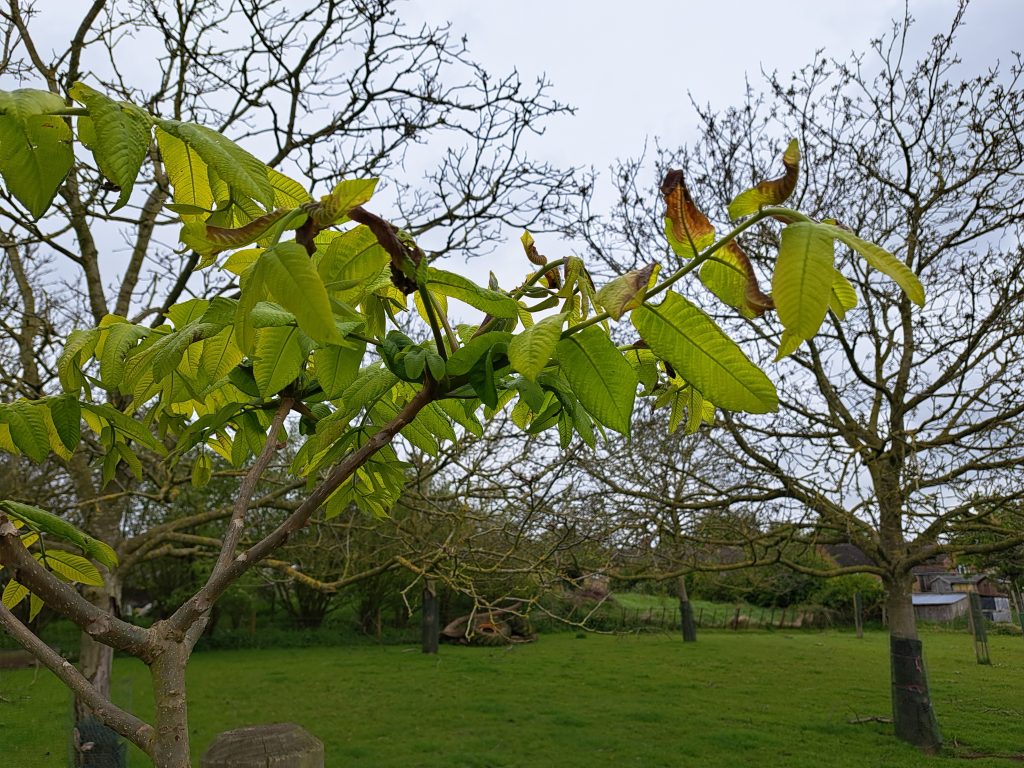
Seedling Heartnut – slight damage to a few leaves but generally unaffacted, most trees in the part of the orchard were completely unaffacted.
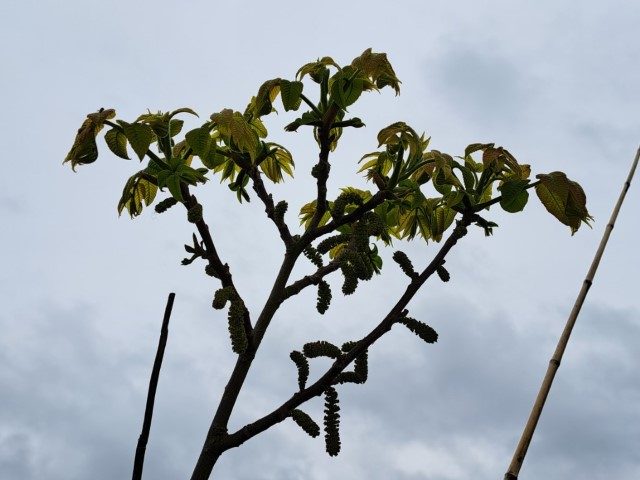
Grafted Butternut – No damage at all
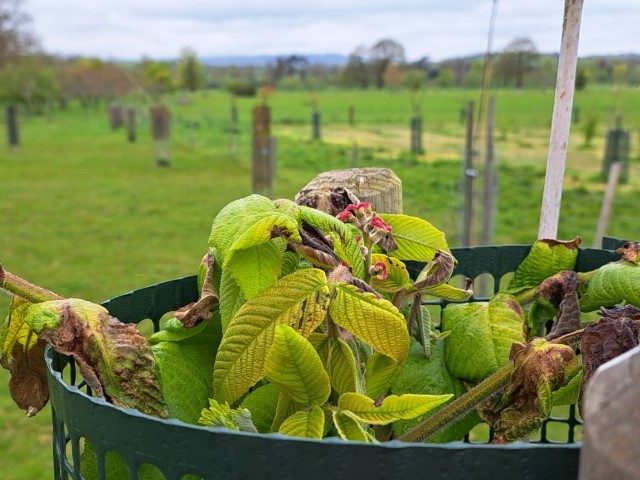
Heartnut Jewelbox – The only other heartnut affected, a few leaves again but the flowers were not touched.
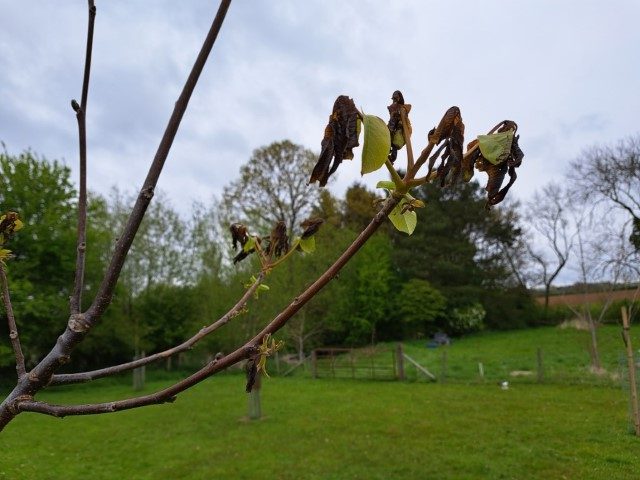
Walnut Perushtinski – Near the lower part of the orchard and one of the earliest into leaf, probably the most damage but nothing it won’t recover from, young leaves like this are the most vulnerable along with catkins.
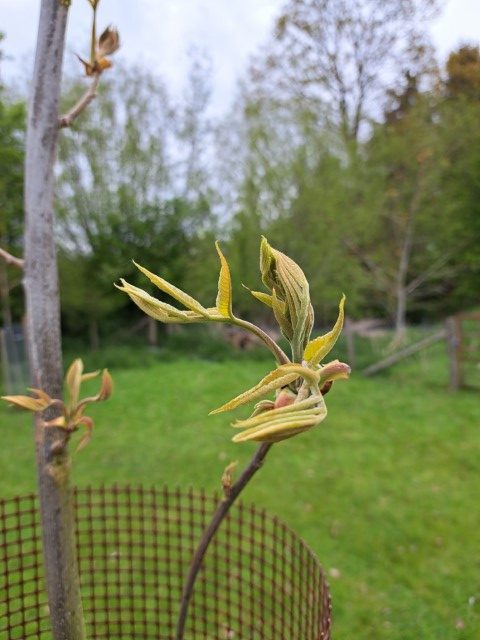
Hican Marquardt – all the Carya cultivars and species seem to be less susceptible to mild frost, harder frost (below -1C?) will still damage them though.
